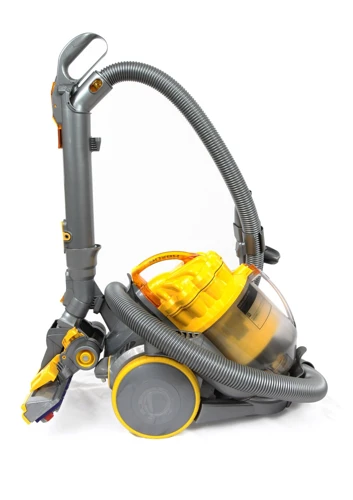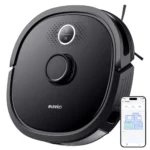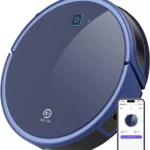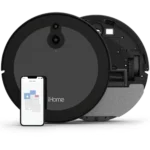As we strive for a more technologically advanced lifestyle, smart home devices have become increasingly popular. Smart vacuum cleaners have revolutionized cleaning by allowing users to control their cleaning activities with ease. However, have you ever wondered how these devices are intelligent enough to navigate through your house and avoid obstacles while ensuring efficient cleaning? The answer lies in the role of machine learning algorithms in smart vacuum cleaners. In this article, we will delve into the world of machine learning algorithms and its impact on smart vacuum cleaners, exploring the various types and applications of these algorithms, as well as the advantages they bring to smart vacuum cleaners. Additionally, we’ll look at the future of machine learning algorithms in smart vacuum cleaners and what the next generation of these devices might entail.
What are Machine Learning Algorithms?
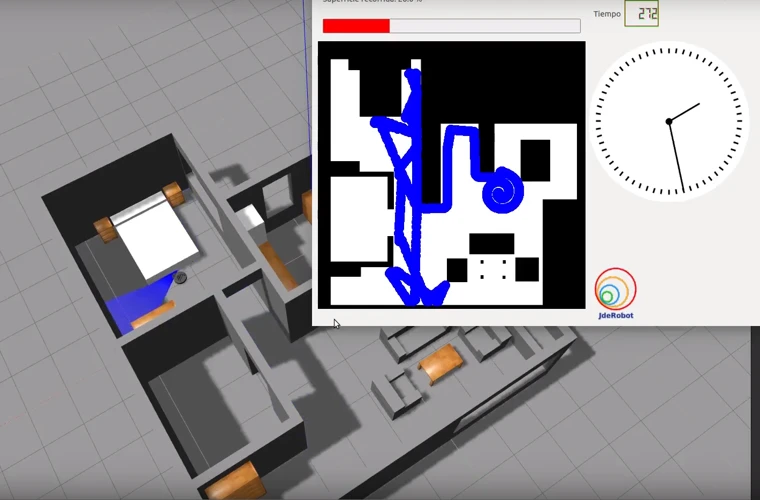
Machine learning algorithms are one of the most popular buzzwords nowadays due to its increasing applications in various industries. You might have come across them while trying to understand the latest technology trends like smart home devices, self-driven cars, drones, and much more. In simple words, machine learning is an advanced technology that enables the machine to learn and improve from the given data without being explicitly programmed. Machine learning algorithms play a crucial role in the working of smart vacuum cleaners as they help the device to map, navigate, avoid obstacles, and identify different types of floors for efficient cleaning. In the following sections, we will dive deeper into understanding machine learning algorithms, their types, working, and how they are utilized in smart vacuum cleaners.
Types of Machine Learning Algorithms
Machine learning algorithms are used in smart vacuum cleaners to enable them to navigate, detect obstacles, and identify different types of floors. There are various types of machine learning algorithms that are commonly used in these devices. Let us take a closer look at these types to understand how they work.
1. Supervised Learning: Supervised learning is a type of machine learning algorithm that is used when the data is labeled. It involves training the algorithm using labeled data, which means the data is already classified into different categories. The algorithm learns from this labeled data and then uses this learning to identify new, unlabeled data that is presented to it. This type of machine learning is commonly used in smart vacuum cleaners to identify different types of floors.
2. Unsupervised Learning: Unsupervised learning is a type of machine learning algorithm that is used when the data is unlabeled. It involves training the algorithm using unlabeled data, which means the data is not classified into different categories. The algorithm learns from this unlabeled data and then uses this learning to identify new, unlabeled data that is presented to it. This type of machine learning is commonly used in smart vacuum cleaners to detect obstacles and avoid them.
3. Semi-supervised Learning: Semi-supervised learning is a type of machine learning algorithm that is used when the data is partially labeled. It involves training the algorithm using both labeled and unlabeled data. The labeled data is used to teach the algorithm the different categories, while the unlabeled data is used to refine the algorithm’s understanding of those categories. This type of machine learning is commonly used in smart vacuum cleaners to map and navigate the cleaning path.
4. Reinforcement Learning: Reinforcement learning is a type of machine learning algorithm that is used when the algorithm needs to learn by trial and error. It involves training the algorithm to maximize a reward function by taking different actions and evaluating the results. This type of machine learning is commonly used in smart vacuum cleaners to learn and adapt to the user’s preferences and cleaning patterns.
Knowing the types of machine learning algorithms used in smart vacuum cleaners can help us appreciate the complexity of these devices. By using these algorithms, smart vacuum cleaners are able to navigate, detect obstacles, and identify different types of floors with a high level of accuracy. If you want to know more about the technology behind these devices, click on this link to read our article on Smart Vacuum Cleaner Technologies.
How do Machine Learning Algorithms Work?
Machine Learning Algorithms are complex mathematical models that allow computers to learn from large data sets and improve their performance without being explicitly programmed. In simpler terms, these algorithms form the basis for artificial intelligence (AI), helping machines to make better decisions based on previous experiences.
There are three main types of machine learning algorithms: Supervised, Unsupervised, and Reinforcement Learning. Each type of algorithm has its unique characteristics and use cases.
| Type | Description | Examples |
| — | — | — |
| Supervised Learning | These algorithms are trained using labeled data and seek to establish a relationship between input data and the corresponding output. The goal is to minimize the difference between predicted output and actual output. | Image classification, Sentiment analysis |
| Unsupervised Learning | These algorithms are trained on unlabeled data and aim to find hidden patterns or relationships in the data. The goal is to group or cluster similar data points without prior knowledge of their labels. | Customer segmentation, Anomaly detection |
| Reinforcement Learning | These algorithms aim to learn from experience through a trial-and-error approach, similar to how humans learn. The goal is to maximize a reward function by taking actions that lead to the maximum cumulative reward. | Game-playing AI, Self-driving cars |
Once these algorithms have been trained on large data sets, they can be used for a variety of tasks such as classification, clustering, regression, and prediction. In the case of smart vacuum cleaners, machine learning algorithms help them perform tasks such as mapping and navigation, obstacle detection and avoidance, and identifying different types of floors.
Next, we’ll explore how these algorithms are implemented in smart vacuum cleaners and how they improve their performance.
Supervised vs. Unsupervised Learning
Supervised learning and unsupervised learning are two types of machine learning algorithms used in smart vacuum cleaners to improve their performance. Supervised learning refers to the process where the machine is trained using a set of labeled data. This labeled data contains inputs and the corresponding outputs, so the machine can learn to map the input to the output.
In contrast, unsupervised learning involves training a machine using a dataset without predefined labels. The machine autonomously analyzes and organizes the data, identifying patterns and creating its own categories. This is useful when the categories are not known beforehand, for example, if there is no existing data on the types of floors in a home.
| Supervised Learning | Unsupervised Learning |
|---|---|
| Requires labeled data | Works with unlabeled data |
| Machine learns to map input to output | Machine identifies patterns and creates categories |
| Used for classification and prediction tasks | Used for exploratory data analysis and pattern recognition |
Supervised learning is commonly used in smart vacuum cleaners for tasks such as identifying different types of surfaces and avoiding obstacles. On the other hand, unsupervised learning can be used for tasks such as discovering areas of the home with high traffic and adjusting the cleaning pattern accordingly.
It is important to note that while supervised and unsupervised learning are different, they can also be used together to maximize the performance of a smart vacuum cleaner. For example, a smart vacuum cleaner may be trained using supervised learning to identify different types of surfaces, and then use unsupervised learning to discover patterns in the cleaning behavior across those surfaces.
The use of both supervised and unsupervised learning in smart vacuum cleaners is an exciting development in the field of machine learning and has the potential to greatly enhance the performance of these devices.
How Do Smart Vacuum Cleaners Use Machine Learning Algorithms?
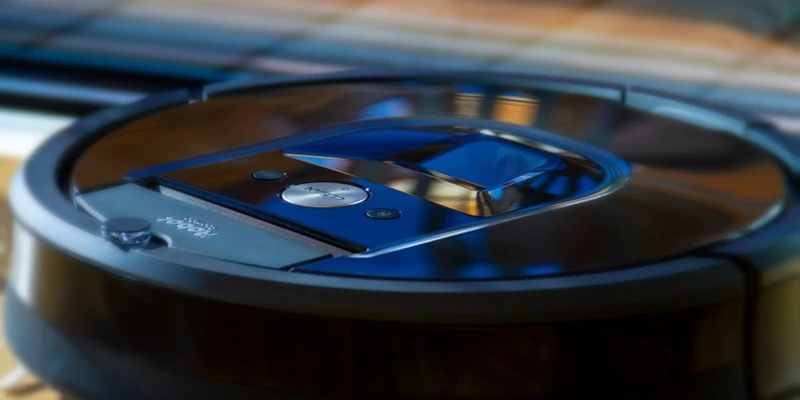
When it comes to keeping homes clean and tidy, smart vacuum cleaners have revolutionized the cleaning game. With their advanced technology, these robotic devices have the ability to perform tasks such as mapping and navigation, obstacle detection, and identification of different types of floors. All of this is made possible by the implementation of machine learning algorithms. In this section, we’ll delve deeper into how these algorithms are used and their role in the efficiency of smart vacuum cleaners.
Mapping and Navigation
One of the key features of smart vacuum cleaners is their ability to map and navigate homes with minimal human intervention. Mapping and navigation are essential functions that help robotic vacuum cleaners move around a room while vacuuming.
For mapping and navigation, smart vacuum cleaners use a variety of sensors, including:
| Sensor Type | Description |
|---|---|
| LIDAR | This sensor uses lasers to create a map of the room and detect obstacles in the vacuum’s path. |
| Camera | Cameras are used to take pictures of the room, creating a digital map that can be used to control the vacuum’s movements. |
| Ultrasonic | Ultrasonic sensors detect obstacles by emitting high-frequency sound waves and listening for echoes. |
| Cliff sensor | These sensors can detect when the vacuum is about to fall down stairs or over a ledge, helping it avoid potential hazards. |
These sensors work together to help the vacuum cleaner understand the layout of the room, the location of furniture and other obstacles, and how to get from one place to another.
When it comes to navigation, smart vacuum cleaners use machine learning algorithms to process the data collected by these sensors and make decisions about where to go and what to do next. This allows them to create an efficient cleaning path that covers every part of the room.
The benefits of using machine learning algorithms for mapping and navigation are clear. They allow smart vacuum cleaners to navigate complex environments with ease, and adapt to changes in the environment as they occur. Additionally, smart navigation sensors used in smart vacuums can help them avoid obstacles while providing more thorough cleaning compared to manual vacuum cleaners.
Mapping and navigation are essential features of a smart vacuum cleaner, and the use of machine learning algorithms has revolutionized the way in which these vacuums clean homes.
Obstacle Detection and Avoidance
Smart vacuum cleaners are equipped with advanced sensors and machine learning algorithms that help them detect and avoid obstacles in their path. This feature is particularly important because it ensures that the vacuum cleaner can navigate around furniture and other items without causing any damage to them.
Obstacle detection and avoidance works in the following way:
- The sensors installed in the vacuum cleaner detect any obstacles that are in the way while the device is in motion.
- The machine learning algorithm then processes this information and decides on the best way to navigate around the obstacle.
- The vacuum cleaner changes its course and avoids the obstacle altogether by steering around it.
- This process is repeated for every obstacle that the vacuum cleaner encounters, ensuring that it never gets stuck or causes any damage to the objects in its path.
The obstacle detection and avoidance feature is particularly important in households with children or pets, where there may be many objects on the floor that need to be avoided. It also makes cleaning more efficient, as the vacuum cleaner can clean more quickly if it doesn’t need to pause or slow down to navigate around obstacles.
Smart vacuum cleaners with obstacle detection and avoidance help minimize the likelihood of damage to the vacuum itself, or any furniture or objects in its path. This means that users can have peace of mind when using their vacuum cleaner, without worrying about accidental damage occurring.
Obstacle detection and avoidance is a crucial feature that adds to the efficiency and effectiveness of smart vacuum cleaners, ensuring that they clean floors effectively and without causing any damage. Any smart vacuum cleaner with this feature is a sound investment for individuals that prioritize convenience and ease during the cleaning process.
If you would like to learn about other benefits of smart vacuum cleaners, click here. Alternatively, if you want to explore whether robot or manual vacuum cleaners are a better fit for you, click here, or click here to find out more about smart vacuums with voice-assist capabilities.
Identifying Different Types of Floors
Smart vacuum cleaners use machine learning algorithms to identify different types of floors in order to make cleaning more efficient. This is done through a combination of sensors, cameras, and machine learning algorithms that detect and analyze the unique patterns and textures of different types of floors.
Types of Floors
- Hardwood
- Tile
- Carpet
- Laminate
- Linoleum
Each of these types of floors has distinct characteristics that can be detected by a smart vacuum cleaner’s sensors and analyzed by its machine learning algorithms. For example, hardwood floors have a smooth surface and a distinct wood grain pattern, while carpet has a fuzzy texture and varying pile height.
How Machine Learning Algorithms Identify Different Types of Floors
Smart vacuum cleaners with machine learning algorithms are equipped with sensors that gather data about the surface they are cleaning. This data is then analyzed by the algorithm to identify the type of floor. The algorithm may also use data from other sensors, such as a camera, to help with the identification process.
The machine learning algorithm uses a process called classification to identify the different types of floors. This process involves analyzing the data collected by the sensors and comparing it to a pre-loaded database of known floor types. The algorithm then uses the patterns and characteristics it has identified to make an educated guess about the type of floor it is cleaning.
The Advantages of Identifying Different Types of Floors
- Optimizes Cleaning – By identifying the type of floor, smart vacuum cleaners are better equipped to clean that surface as efficiently as possible.
- Customized Settings – Smart vacuum cleaners equipped with machine learning algorithms can also adjust their settings and cleaning methods based on the floor type, leading to a more tailored cleaning experience.
- Improved Durability – By using the correct settings for each type of floor, the machine is less likely to cause damage during the cleaning process.
Conclusion
Machine learning algorithms are revolutionizing the way smart vacuum cleaners identify and clean different types of floors. By using sensors, cameras, and complex algorithms, these devices are able to optimize cleaning and improve the user experience, making them a valuable addition to any household.
Advantages of Using Machine Learning Algorithms in Smart Vacuum Cleaners
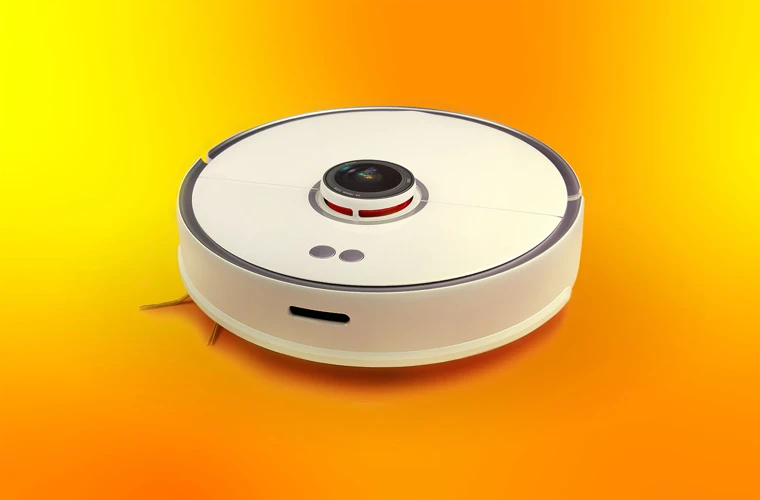
As we continue to advance technologically, smart home devices have become more efficient and autonomous. One such device is the smart vacuum cleaner, which has revolutionized the way we clean our homes. With the integration of machine learning algorithms, these smart vacuum cleaners are becoming even more intelligent, leading to a better cleaning experience for users. In this section, we will explore the various advantages of using machine learning algorithms in smart vacuum cleaners, highlighting their ability to improve accuracy, performance, and user experience.
Better Accuracy
Using machine learning algorithms in smart vacuum cleaners has improved their accuracy significantly. These algorithms allow the vacuum cleaners to learn about the layout of the house and the various obstacles in their paths. This helps them to avoid collisions and move around the room more efficiently. Here are a few ways in which machine learning algorithms have led to better accuracy in smart vacuum cleaners:
- Object recognition: Smart vacuum cleaners use machine learning algorithms to recognize different types of objects, such as furniture, toys, or cables on the floor. This helps them to navigate around these obstacles and avoid collisions. The algorithms learn from the data collected by the sensors on the vacuum cleaners and can identify objects based on their shapes, colors, and textures.
- Floor detection: Smart vacuum cleaners also use machine learning algorithms to detect different types of flooring, such as carpets, tiles, or hardwood. This helps them to adjust their cleaning modes and suction power accordingly. The algorithms learn from the data collected by the sensors and can identify different textures and patterns on the floor.
- Localization: Smart vacuum cleaners use machine learning algorithms to locate themselves in the house and create maps of the rooms. This helps them to know where they have already cleaned and where they still need to go. The algorithms learn from the data collected by the sensors and can identify landmarks, such as walls, doors, or windows.
By improving the accuracy of smart vacuum cleaners, machine learning algorithms have made them more reliable and efficient. They can complete cleaning tasks more quickly and with fewer errors. This has led to a better user experience for homeowners who no longer have to spend as much time cleaning their floors themselves.
Improved Performance
One of the most notable benefits of using machine learning algorithms in smart vacuum cleaners is their ability to improve performance. The machine learning algorithms used in these devices allow them to learn from their cleaning history, making adjustments to their cleaning methods to optimize their performance.
Here are some ways that machine learning algorithms enhance the performance of smart vacuum cleaners:
- Increase in Efficiency: Machine learning algorithms enable smart vacuum cleaners to learn the most efficient cleaning routes based on their cleaning history. This reduces cleaning time and saves energy.
- Better Cleaning Accuracy: Advanced machine learning algorithms are incorporated into smart vacuum cleaners to help them develop a better understanding of their surroundings, so they can clean more accurately. These algorithms analyze different room geometries, obstacles, and other environmental factors, allowing the smart vacuum cleaner to develop a more accurate map of the room and clean every corner more effectively.
- Improved Battery Life: Battery life is an essential performance metric for any smart vacuum cleaner. By using machine learning algorithms that enable the device to learn from its cleaning history, the device can better balance battery life and performance.
- Intelligent Scheduling: Smart vacuum cleaners are equipped with scheduling capabilities. Machine learning algorithms help to automate the scheduling process, adapting to the user’s cleaning habits and needs, and determining patterns of use for optimal performance.
Machine learning algorithms play a crucial role in improving the performance and efficiency of smart vacuum cleaners. As the technology continues to evolve, we can expect to see even more advanced machine learning algorithms that raise the bar even higher in terms of performance and accuracy.
Enhanced User Experience
One of the most significant benefits of incorporating machine learning algorithms in smart vacuum cleaners is the enhanced user experience it provides. With traditional vacuum cleaners, users have to spend a considerable amount of time and effort cleaning their floors themselves. However, with the introduction of smart vacuum cleaners, the process of cleaning floors has become much more efficient and convenient.
Below is a table outlining how the use of machine learning algorithms can enhance the user experience of smart vacuum cleaners:
| Enhanced User Experience | How Machine Learning Algorithms Achieve It |
|---|---|
| Time-Saving | Smart vacuum cleaners with machine learning algorithms can save users time and effort by autonomously cleaning their floors, allowing users to focus on more important tasks. |
| Customized Cleaning | Machine learning algorithms can help smart vacuum cleaners learn the preferences and cleaning patterns of users, enabling them to customize the cleaning process according to the user’s specific needs. |
| Remote Control | Smart vacuum cleaners with machine learning algorithms can be controlled remotely through smartphones or voice assistants, providing users with greater convenience and flexibility. |
| Improved Cleaning Efficiency | Machine learning algorithms can help smart vacuum cleaners optimize cleaning routes and strategies, identifying areas that require more attention and adjusting the cleaning process accordingly. |
| Real-Time Feedback | Smart vacuum cleaners with machine learning algorithms can provide users with real-time feedback on the cleaning process, including cleaning progress, battery status, and error notifications, enhancing the user experience. |
By incorporating machine learning algorithms, smart vacuum cleaners have revolutionized the cleaning process, providing users with a greater level of convenience, customization, and efficiency. These benefits have contributed to the growing popularity of smart vacuum cleaners among consumers, with many users switching to smart vacuum cleaners as their primary cleaning solution. As machine learning algorithms continue to advance, we can expect even more enhancements to the user experience of smart vacuum cleaners in the future.
Future of Machine Learning Algorithms in Smart Vacuum Cleaners
As technology continues to advance, it’s safe to say that the future of machine learning algorithms in smart vacuum cleaners is bright. The possibilities are endless, and manufacturers are constantly searching for new ways to improve the performance of these devices using machine learning techniques.
One area that is sure to see significant developments in the future is obstacle detection and avoidance. While current smart vacuum cleaners are capable of detecting objects in their path and adjusting their course, they still struggle with recognizing more complex objects like pets or furniture with unusual shapes. However, with continued research and development, we can expect to see smart vacuums capable of maneuvering around objects of varying shapes and sizes with ease.
Another area with significant potential for improvement is mapping and navigation. Currently, smart vacuum cleaners use a combination of sensors and algorithms to map and navigate the space, but this can be further improved. For example, future devices may be able to recognize different rooms and adjust their cleaning patterns accordingly, or create personalized maps of homes that can be accessed remotely.
Machine learning algorithms can be used to enhance the cleaning process itself. For instance, by analyzing usage patterns and user interactions, smart vacuum cleaners may be able to recommend optimal cleaning frequencies and times, or highlight areas of the home that require extra attention.
Lastly, manufacturers are likely to continue exploring ways to leverage machine learning algorithms to enhance the overall user experience. For example, we may see more devices with conversational interfaces that allow users to issue commands or ask questions, or smart vacuums that automatically adapt to different users’ preferences.
In short, the future of machine learning algorithms in smart vacuum cleaners will undoubtedly bring many exciting advances that will further enhance the performance and capabilities of these devices, making them even more indispensable in our homes.
Conclusion
After exploring the role of machine learning algorithms in smart vacuum cleaners, we can conclude that these algorithms have significantly revolutionized the cleaning industry. With the use of various algorithms, smart vacuum cleaners can navigate through the house, detect obstacles, and identify various surfaces with greater accuracy.
Machine learning algorithms have provided smart vacuum cleaners with a range of advantages over traditional ones. These include better accuracy, improved performance, and enhanced user experience. It is safe to conclude that the use of these algorithms has taken the cleaning process to a whole new level.
The future of machine learning algorithms in smart vacuum cleaners is bright. With further advancements in technology, vacuum cleaners will become even smarter and more sophisticated. They will be equipped with more intelligent algorithms that will allow them to clean even the most complex areas of the house with ease.
In conclusion, it is evident that machine learning algorithms have had a significant impact on the way we clean our homes. With the advent of smart vacuum cleaners, we can now sit back and relax while these intelligent robots do the work for us. The technology is still in its early stages, but with more research and development, we can expect to see even more advanced and sophisticated cleaning machines in the future.
Frequently Asked Questions
1. Can smart vacuums learn to navigate a new environment?
Yes, smart vacuum cleaners can learn to navigate a new environment using machine learning algorithms. They create a map of the environment and learn to navigate it efficiently.
2. How does a smart vacuum detect obstacles and avoid them?
A smart vacuum cleaner uses sensors and machine learning algorithms to detect obstacles and avoid them. It can learn from past experiences and adjust its route accordingly.
3. Can smart vacuums identify different types of floors?
Yes, using machine learning algorithms, smart vacuums can identify different types of floors and adjust settings accordingly to optimize cleaning performance.
4. Are smart vacuums more efficient than traditional vacuums?
Yes, smart vacuums are more efficient than traditional vacuums. They use machine learning algorithms to optimize cleaning performance and reduce cleaning time.
5. How often do smart vacuums need to be cleaned?
Smart vacuums should be cleaned after every use. Empty the dustbin and clean the filters to maintain optimal performance.
6. Can smart vacuums be controlled remotely?
Yes, smart vacuums can be controlled remotely using a smartphone app. You can start, stop, and schedule cleaning sessions from anywhere.
7. Do smart vacuums have a longer lifespan than traditional vacuums?
Smart vacuums have a similar lifespan to traditional vacuums. However, they use advanced technology and can offer better cleaning performance.
8. Can smart vacuums work on multiple floor types?
Yes, smart vacuums can work on multiple floor types, including carpets, hardwood, tile, and more. They can adjust their cleaning settings based on the floor type.
9. Do smart vacuums require internet connection to function?
No, smart vacuums do not require internet connection to function. However, they may offer additional features, such as remote control and voice command, if connected to the internet.
10. Can smart vacuums learn to recognize specific objects and avoid them?
Yes, using machine learning algorithms, smart vacuums can learn to recognize specific objects and avoid them. This is particularly useful in homes with pets or delicate items.
